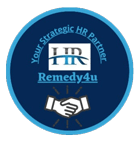Bridging the Generational Gap in a Multigenerational Workforce: A Roadmap for 2025
The modern workplace thrives on diversity, with a multigenerational workforce bringing unique skills and perspectives. However, navigating the generational gap between Traditionalists, Baby Boomers, Gen X, Millennials, and Gen Z employees requires intentional strategies to foster collaboration, inclusivity, and innovation. Here's how organizations can bridge these gaps effectively.
Understanding the Generational Gap
Each generation brings distinctive values and expectations to the table:
- Traditionalists value discipline and hierarchy.
- Baby Boomers emphasize loyalty and in-person connections.
- Gen X prioritizes independence and work-life balance.
- Millennials seek purpose and teamwork.
- Gen Z employees demand flexibility, tech integration, and inclusivity.
This diversity creates opportunities for innovation but also poses challenges in aligning work styles and communication preferences.
Key Challenges in a Multigenerational Workforce
- Communication Disparities: Different generations prefer varied communication methods, from email to instant messaging.
- Technology Usage: Gen Z employees are tech-savvy, while older employees may need support in adopting new tools.
- Workplace Expectations: Baby Boomers value stability, whereas younger generations prefer agility and purpose-driven roles.
Strategies to Bridge the Generational Gap
1. Build Open Channels of Communication
Encourage cross-generational conversations to address misunderstandings and promote mutual respect. Introduce mentorship programs where experienced employees and Gen Z employees can exchange knowledge.
2. Embrace Flexible Work Models
Tailor your policies to accommodate different preferences. For example, hybrid models work well for Millennials and Gen Z, while structured roles might suit Traditionalists.
3. Leverage Generational Strengths
Mix teams to pair technological expertise of Gen Z employees with the experience of Baby Boomers and Gen X. This not only boosts collaboration but enhances problem-solving.
4. Provide Inclusive Training Programs
Offer training that addresses the generational gap in the workplace, focusing on communication, technology, and team dynamics.
5. Customize Feedback and Recognition
Regularly provide instant feedback to younger employees while maintaining a formal approach for older generations.
Benefits of an Aligned Multigenerational Workforce
- Enhanced Innovation: Diversity in thinking fuels creativity.
- Employee Retention: Inclusive policies lead to higher job satisfaction.
- Cultural Strength: Collaboration fosters a unified work environment.
Conclusion:
Bridging the generational gap in a multigenerational workforce is not just a challenge but an opportunity to create a vibrant and inclusive workplace. By aligning the strengths and expectations of all generations, businesses can thrive in an evolving landscape.
Unlock the potential of your multigenerational workforce!


Comments